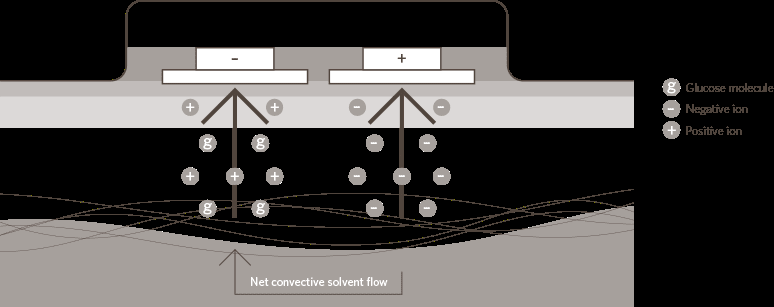#2 Medical Tech; Will it make us Super Healthy Humans?
Follow articleHow do you feel about this article? Help us to provide better content for you.
Thank you! Your feedback has been received.
There was a problem submitting your feedback, please try again later.
What do you think of this article?
Listen to The DesignSpark Podcast
#2: Can I Hack Your Heart?
Aided by the IoT (of course) and enhanced with AI, today’s medical technology has something for everyone – from those monitoring their recovery from illness or managing chronic conditions, to older people seeking assistance to live independently for longer, the limb-different community looking for truly empowering prosthetics, and the perfectly healthy seeking to stay that way.
The outwardly healthy may just be the most lucrative market for today’s innovators: according to Allied Market Research, some $60 billion of fitness trackers could be logging our every move by 2024, as we walk, run and ride our way towards suggested cardio and calorie targets.
Fitter
Smart watches from the big consumer-mobile brands and wristbands from focused fitness-equipment vendors will dominate sales, and all have identified the opportunity to expand from selling “gear” to selling services that sustain new business models based on recurring revenue. Fitbit already has a B2B unit called Fitbit Health Solutions that provides services for enterprise customers and, in 2018, launched the Fitbit Care platform to connect its wearables with private and corporate health plans. With all that information streaming onto its servers from trackers all over the world (used within the rules of data protection, of course), the company has the knowledge it needs to grow a portfolio of value-added services like fitness coaching and lifestyle tips such as exercise and dietary advice.
Tracker wearers can access far more extensive information about themselves than ever before and compare their data with those of others to benchmark themselves in terms of age group or activity. It’s even possible to see data such as the oxygen-uptake capability (VO2 max) of professional athletes as the ultimate reference. This is the age of the quantified self and it has the potential to increase general health and fitness – for longer and more active lives -- by encouraging us all to take an interest and draw inspiration from measuring our improvements.
Healthier
While tracker wearers are intent on becoming better through technology, others are depending on tech in their quest to get well – or otherwise find support to manage long-term conditions such as diabetes, which is an incredibly common condition: Diabetes UK says about five million people could be diabetic by 2025, while in the US 40% of adults -- that’s over 100 million people -- are living with diabetes or prediabetes.
Monitoring blood glucose is an essential part of managing the condition. Historically, patients have had to do their own pinprick tests to check their levels using a home analyser. More recently, advancements in medical technology have relieved this painful procedure, enabling simple home tests to give accurate readings without taking blood. The latest portable blood-glucose meters such as Dia-Vit utilise spectrometric technology, analysing light at multiple wavelengths to measure blood parameters that are fed into an algorithm to calculate the glucose level.
The next step could be continuous glucose monitoring using a device such as the sugarBEAT® patch, which can help users stay within a healthy blood-glucose range and see for themselves the effects of lifestyle choices on their glucose-level trends. The patch works by capturing a small quantity of sub-cutaneous fluid to analyse the glucose content and contains a rechargeable transmitter to send data every five minutes to a smartphone or smartwatch app for the wearer to read.
Blood-glucose analysis in the sugarBEAT monitoring patch.
If ease of use and non-invasive, pain-free monitoring are two of the greatest benefits delivered by today’s medical technology, other developments promise to help established devices such as pacemakers or other implantables become smarter and more valuable. Devices inside the body can capture information such as heart rhythm, blood composition, or even disease progression that may not be readily determined from external observations alone. The challenge is to extract the information from the device. Wireless is the way to go, but power and antenna-size constraints normally restrict communication range and battery lifetime.
A new injectable radio developed by researchers at Michigan University could soon consign these limitations to history by combining a clever antenna-matching scheme, capacitor-assisted power supply for the transmitter, and a photovoltaic battery charger that captures energy from ambient infrared light passing through the body. With only a 1mm antenna, it can transmit signals up to 50cm, which is enough to send short datagrams to an external receiver.
Stronger?
With these advancements in wearables and implantables, everyone can get better information about how health and fitness, and the impact of lifestyle choices. Moreover, healthcare professionals can get the data they need to tailor individual care packages for faster recovery or for more stable management of long-term conditions. But could medical technology help reach superhuman levels of strength, speed, or endurance? Readers of a certain vintage, who may remember Steve Austin, the Six Million Dollar Man (“We have the technology. We can rebuild him.”), could be excited at the prospects now unfolding in the field of real-life bionics – the fusion of biology with electronics.
To see where things stand here, let’s take a quick look at the history of prosthetics. Dealing with limb loss has been a perennial challenge spanning the history of civilisation. The earliest functioning prosthetics – as distinct from cosmetic-only replacements – are thought to be artificial toes found among ancient Egyptian remains. Major conflicts such as the American Civil War and the First World War have proved to be powerful drivers for limb replacements that are not only lifelike but also provide similar or better functionality than the “standard” biological original. A central aim has been to help amputees return to work during peacetime.
Today’s prosthetics are moving into the bionic age, leveraging technologies such as myoelectric control to achieve natural-looking powered limb movements by interpreting the tiny electrical signals from human muscles. Other enabling technologies include 3D scanning and 3D printing, which allow specialised parts to be produced economically in very small numbers and so enable small teams of specialists such as Open Bionics to create products such as the Hero Arm and – by their own declaration -- turn disabilities into super powers. The company even provides free superhero-themed covers with the prosthetic arms it supplies for children.
Image source: https://openbionics.com/hero-arm/
Building on these advancements to create “augmented humans” with enhanced powers such as strength, agility, or endurance could be just a pipedream. On the other hand, the prospects for mind-controlled prosthetics hold out the hope for an emerging generation of artificial limbs that offer near-normal function. The US Food and Drug Administration (FDA) has already spotted the potential and published a “leapfrog” document setting out initial thoughts on how to support development.
Sum-Up
According to the Amputee Coalition, vascular disease including diabetes is the most common cause of limb loss, with five-year mortality rates among vascular-disease amputees higher than breast or colon cancer sufferers.
Given today’s rising instances of diabetes, and the medical-technology devices now emerging to help manage such conditions and – ideally -- aid prevention by facilitating healthier lifestyles through tracking and associated services could have a massive effect on longevity and quality of life. We may never become superhuman – but getting closer to full human functionality, for a higher proportion of our lifetime, may be enough for most of us.
For a more light-hearted take on medical technology head to Apple Podcasts or Spotify and download The DesignSpark Podcast.
 |
 |
 |








